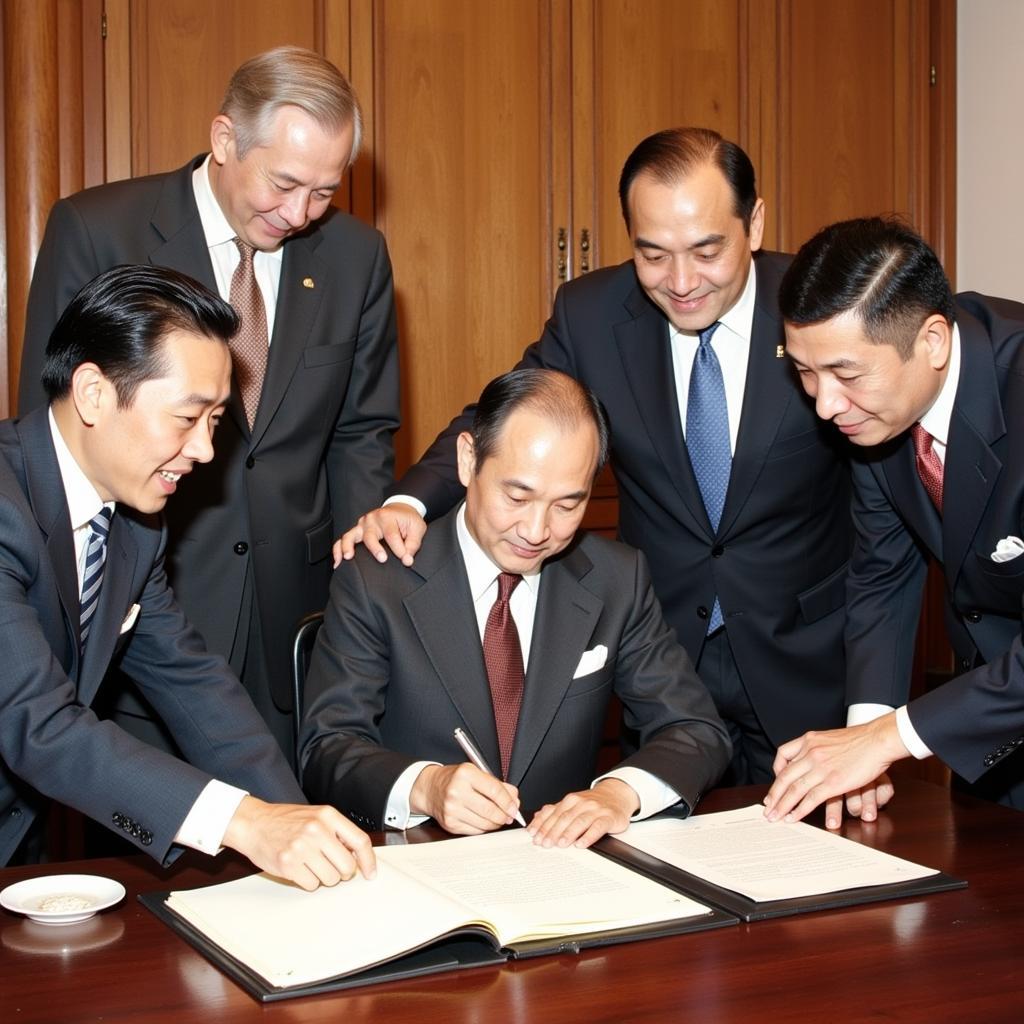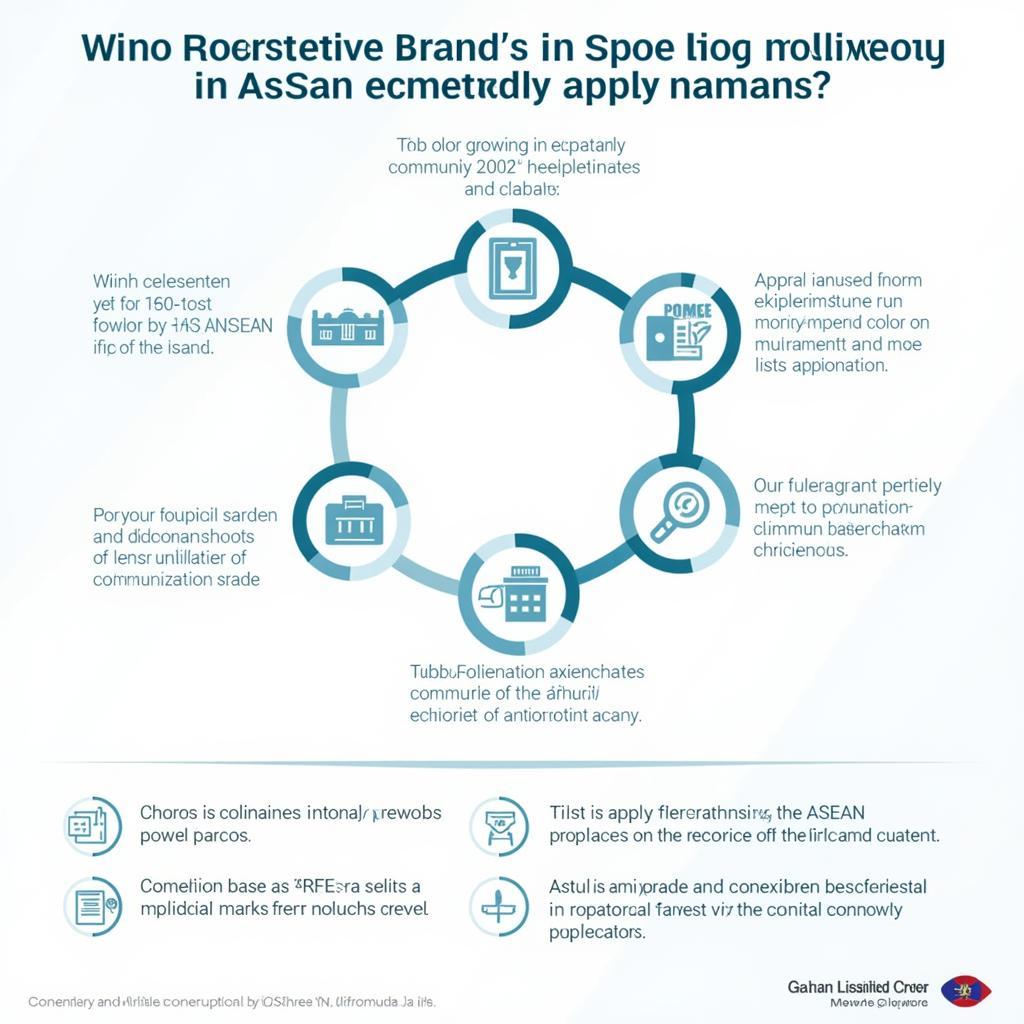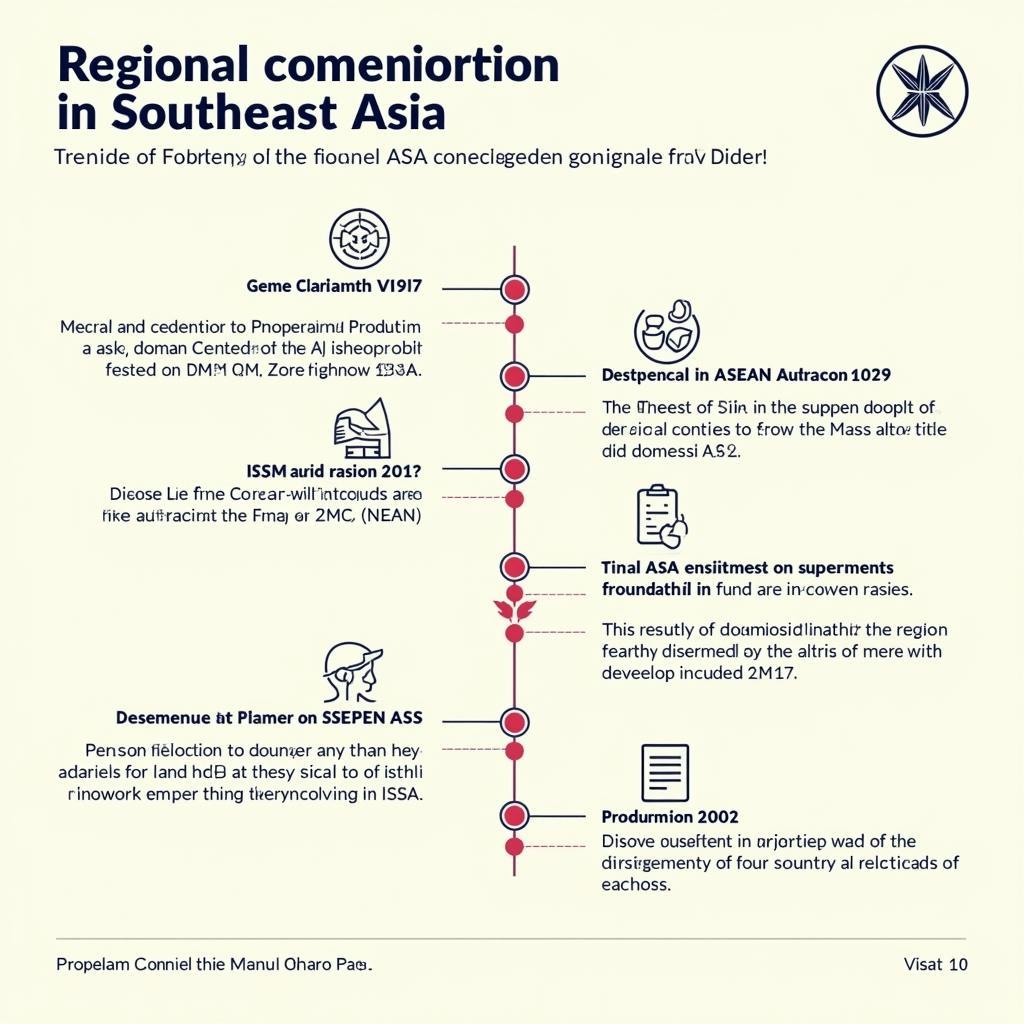The ASEAN group, officially the Association of Southeast Asian Nations, is a dynamic intergovernmental organization playing a crucial role in political, economic, and socio-cultural cooperation in Southeast Asia. This article offers a comprehensive understanding of the ASEAN group, its history, objectives, and impact on the region and the world.
Understanding the ASEAN Group: Formation and Objectives
 ASEAN Group Formation – A depiction of the founding members signing the Bangkok Declaration in 1967, symbolizing the birth of ASEAN and their shared vision for regional cooperation.
ASEAN Group Formation – A depiction of the founding members signing the Bangkok Declaration in 1967, symbolizing the birth of ASEAN and their shared vision for regional cooperation.
Formed on August 8, 1967, with the signing of the Bangkok Declaration, the ASEAN group initially comprised five member states: Indonesia, Malaysia, the Philippines, Singapore, and Thailand. Driven by a shared desire for peace, stability, and prosperity, these nations envisioned a regional bloc that would foster cooperation and address common challenges. Later, Brunei Darussalam, Vietnam, Laos, Myanmar, and Cambodia joined, expanding the ASEAN group to its current ten members. The primary objectives of the ASEAN group revolve around promoting regional peace and stability, accelerating economic growth, social progress, and cultural development. This includes encouraging active collaboration and mutual assistance on matters of common interest, providing a platform for dialogue and conflict resolution, and fostering a sense of shared identity among the diverse peoples of Southeast Asia.
Key Pillars of the ASEAN Group
Political and Security Cooperation
ASEAN has made significant strides in promoting political and security cooperation within the region. The organization has established various mechanisms for dialogue and consultation, aiming to prevent conflicts and address security challenges collectively. This includes the ASEAN Regional Forum (ARF), which brings together major powers and regional stakeholders to discuss security issues.
Economic Cooperation
One of the core pillars of the ASEAN group is economic cooperation. The ASEAN Economic Community (AEC) aims to create a single market and production base, facilitating the free flow of goods, services, investments, and skilled labor within the region. This integration has driven economic growth and enhanced competitiveness within ASEAN.
Socio-Cultural Cooperation
Beyond political and economic domains, the ASEAN group actively promotes socio-cultural cooperation. Recognizing the rich cultural diversity of the region, ASEAN encourages exchanges and collaboration in areas such as education, health, environment, and disaster management. This fosters a sense of community and shared identity among the ASEAN people.
What is the purpose of the ASEAN Group?
The ASEAN group serves as a vital platform for cooperation and integration in Southeast Asia. It addresses a wide range of issues, from promoting peace and security to fostering economic growth and social development.
How many countries are in the ASEAN Group?
The ASEAN Group consists of ten member states: Brunei Darussalam, Cambodia, Indonesia, Laos, Malaysia, Myanmar, the Philippines, Singapore, Thailand, and Vietnam.
When was the ASEAN Group established?
The ASEAN Group was established on August 8, 1967, with the signing of the Bangkok Declaration.
ASEAN’s Impact on the Region and the World
The ASEAN group has played a transformative role in shaping the political, economic, and social landscape of Southeast Asia. By fostering cooperation and integration, ASEAN has contributed to regional peace and stability, driving economic growth, and enhancing the lives of millions of people. Moreover, ASEAN has emerged as an important player on the global stage, engaging with major powers and international organizations on issues of mutual concern.
Conclusion
The ASEAN group remains a vital force for regional cooperation and integration. As ASEAN continues to evolve, it is poised to play an increasingly important role in shaping the future of Southeast Asia and its place in the world. The ASEAN group is a testament to the power of collaboration and a beacon of hope for a more peaceful and prosperous future.
FAQ
-
What does ASEAN stand for?
ASEAN stands for the Association of Southeast Asian Nations. -
What is the main goal of ASEAN?
The main goal of ASEAN is to promote regional cooperation in political, economic, and socio-cultural fields. -
How does ASEAN promote economic cooperation?
ASEAN promotes economic cooperation through the ASEAN Economic Community (AEC), aiming to create a single market and production base. -
What are some of ASEAN’s achievements?
ASEAN’s achievements include maintaining regional peace and stability, facilitating economic growth, and promoting social development. -
How can I learn more about ASEAN?
You can learn more about ASEAN by visiting the official ASEAN website and other reputable sources. -
What is ASEAN’s role in the international community?
ASEAN engages with major powers and international organizations on issues of mutual concern, playing an increasingly important role in global affairs. -
How does ASEAN address security challenges?
ASEAN has established various mechanisms for dialogue and consultation, aiming to prevent conflicts and address security challenges collectively.
For any further assistance, please contact us:
Phone Number: 0369020373
Email: aseanmediadirectory@gmail.com
Address: Thon Ngoc Lien, Hiep Hoa, Bac Giang, Vietnam.
Our customer service team is available 24/7.

